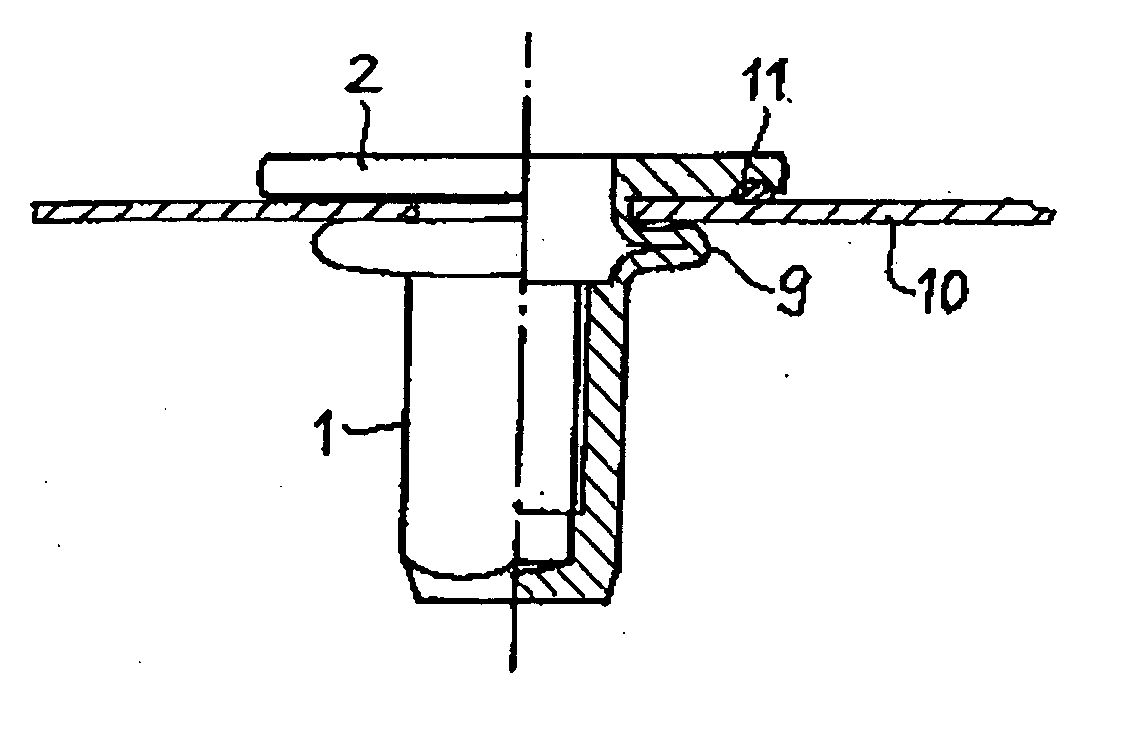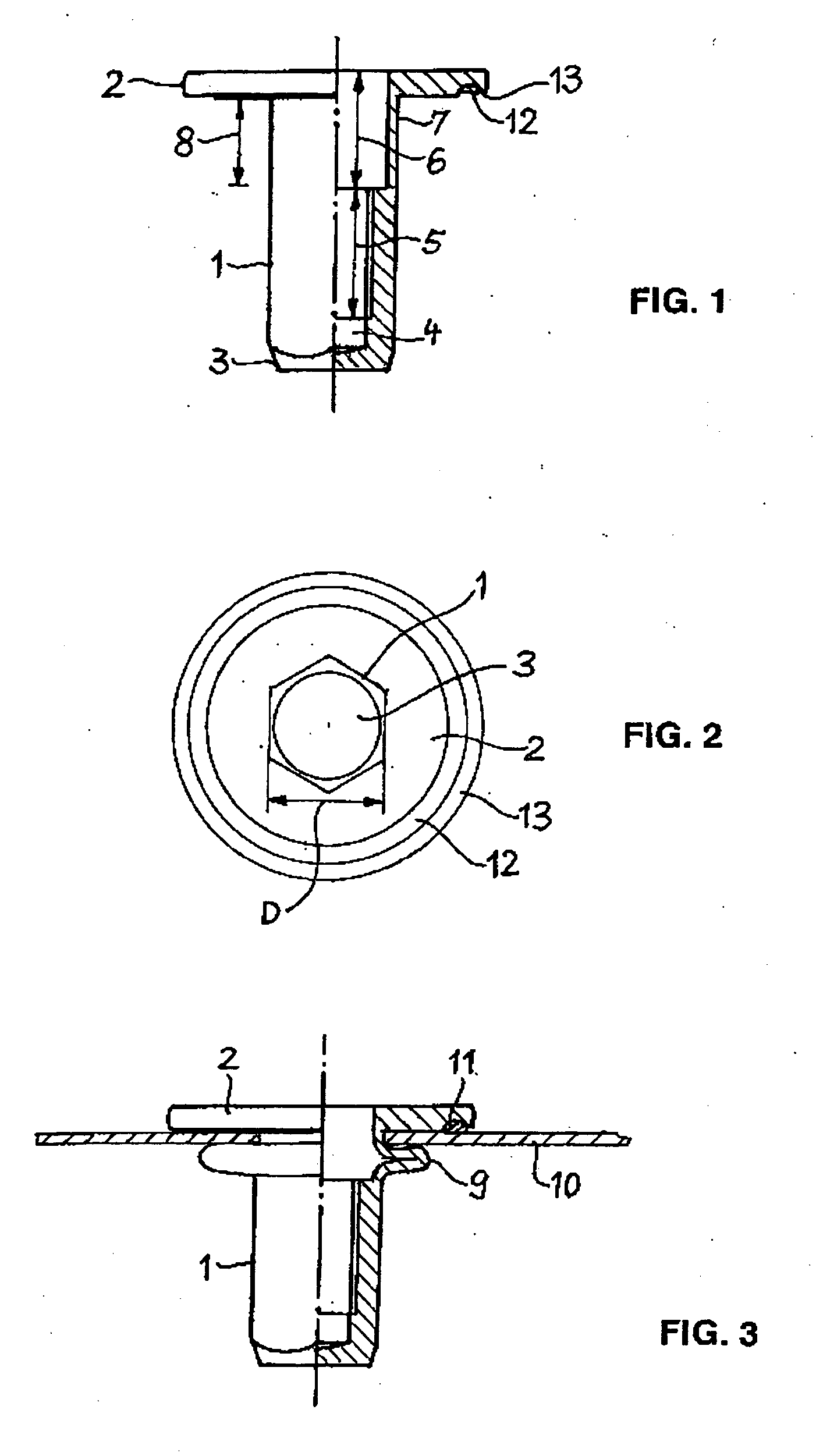Blind rivet nut
a blind rivet and nut technology, applied in the direction of screws, dowels, fastening means, etc., can solve the problem of no longer being able to have uniform contact with the flange of the blind rivet nut, and achieve the effect of reducing the load in the area of the deformation bulge, reducing the load, and being easy to suppor
- Summary
- Abstract
- Description
- Claims
- Application Information
AI Technical Summary
Benefits of technology
Problems solved by technology
Method used
Image
Examples
Embodiment Construction
[0014] The blind rivet nut represented in the drawing has an elongated shank 1, bearing a flange 2 at one end. The shank 1 has the shape of a regular hexagonal prism, and is conically pointed at its end opposed to the flange 2. Owing to the hexagonal outer contour, when the shank is placed in a suitably shaped bore adapted in size to the cross-section of the shank, rotation of the shank in the bore is prevented. The pointed end facilitates introduction of the shank into the bore. The flange 2 extends at right angles to the lengthwise axis of the shank 1 and has the shape of a plane circular disk. Alternatively, the flange may have a polygonal shape, for example, square or hexagonal.
[0015] Through the flange 2 and the greater part of the length of the shank 1, a bore 4 extends, whose lengthwise axis coincides with the lengthwise axis of the shank 1. The bore 4 is closed at the end 3 of the shank 1. It comprises a first bore segment 5 adjacent to the end 3, provided with an internal ...
PUM
 Login to View More
Login to View More Abstract
Description
Claims
Application Information
 Login to View More
Login to View More - R&D
- Intellectual Property
- Life Sciences
- Materials
- Tech Scout
- Unparalleled Data Quality
- Higher Quality Content
- 60% Fewer Hallucinations
Browse by: Latest US Patents, China's latest patents, Technical Efficacy Thesaurus, Application Domain, Technology Topic, Popular Technical Reports.
© 2025 PatSnap. All rights reserved.Legal|Privacy policy|Modern Slavery Act Transparency Statement|Sitemap|About US| Contact US: help@patsnap.com


